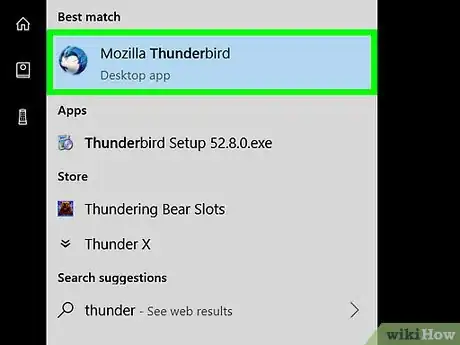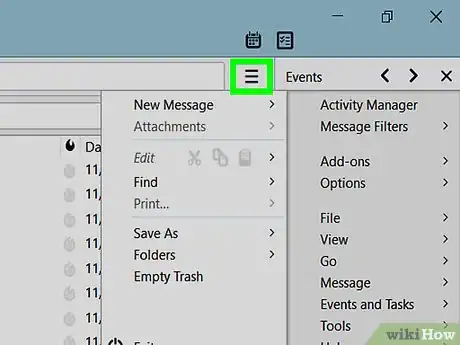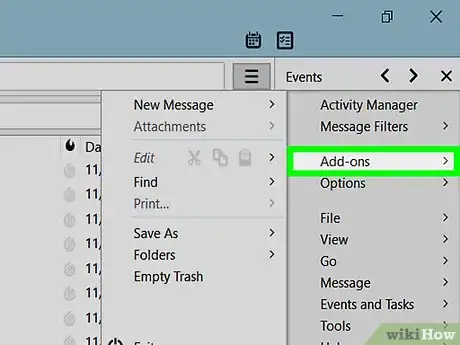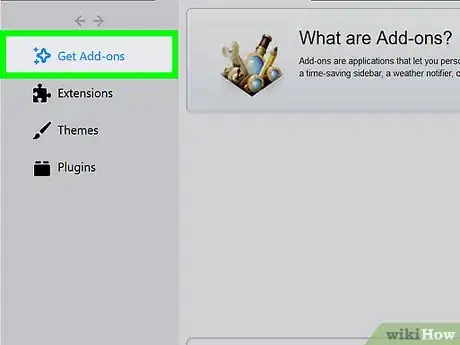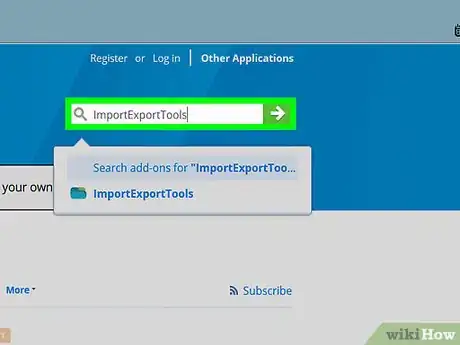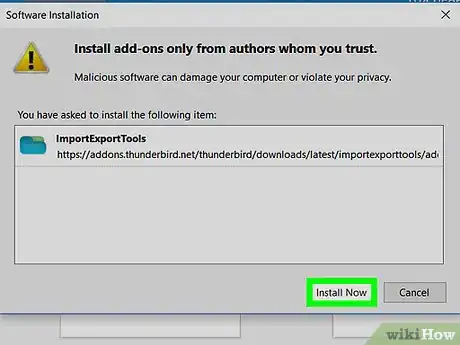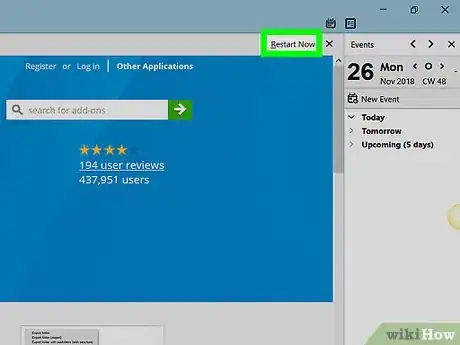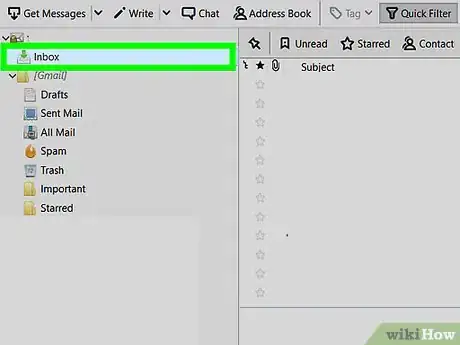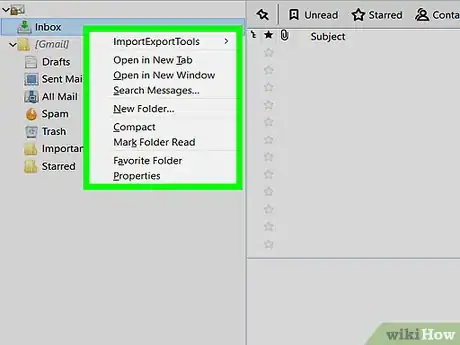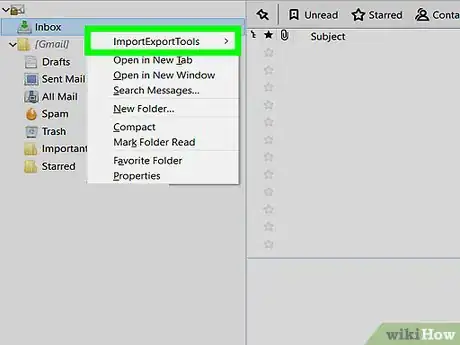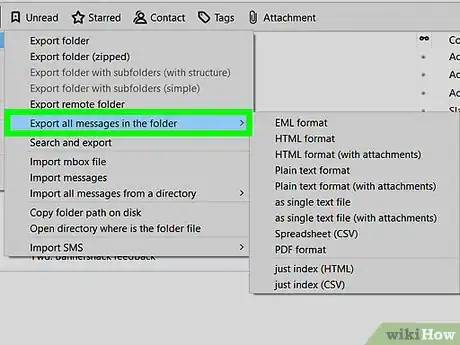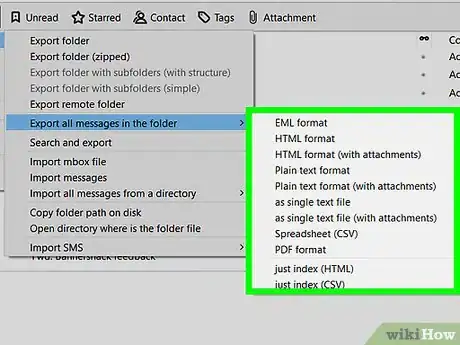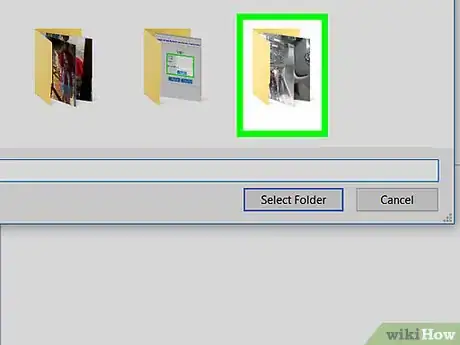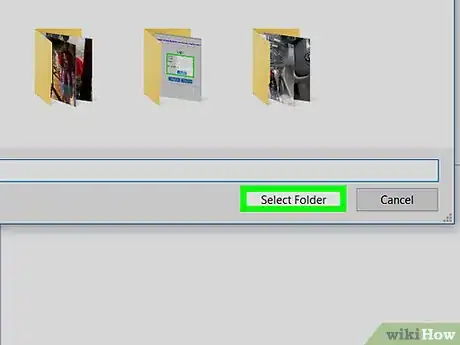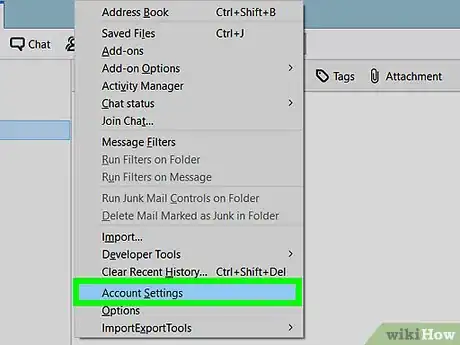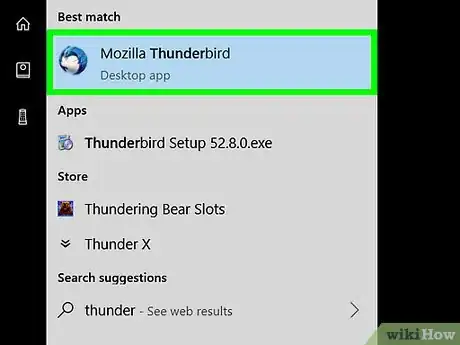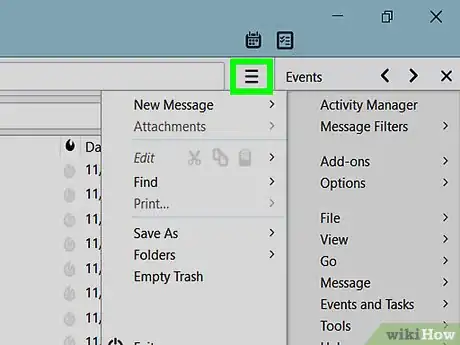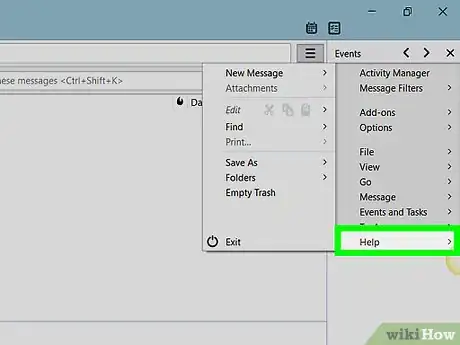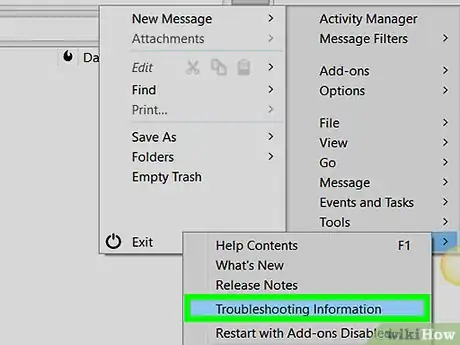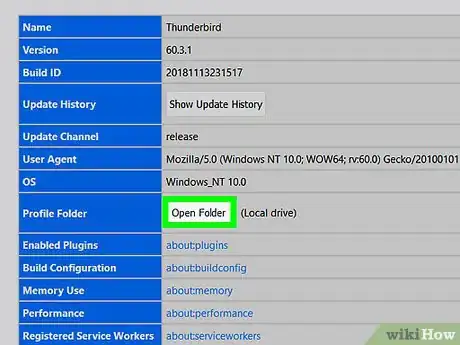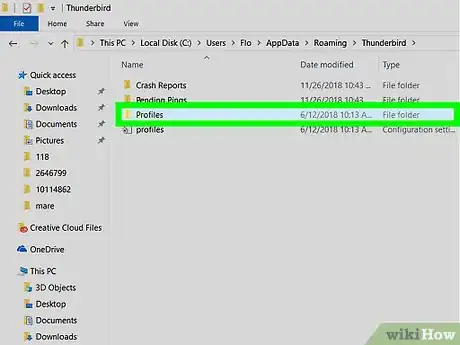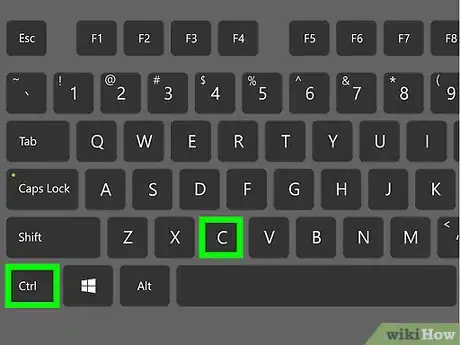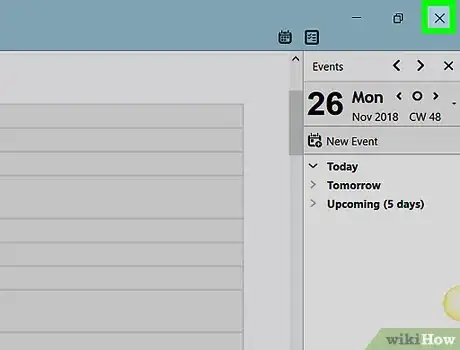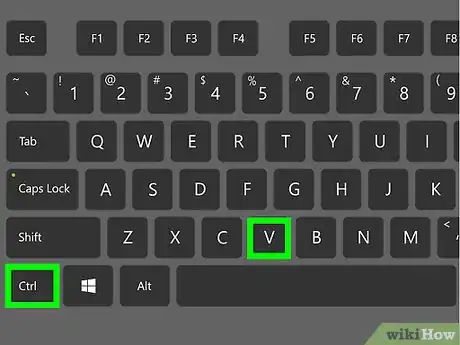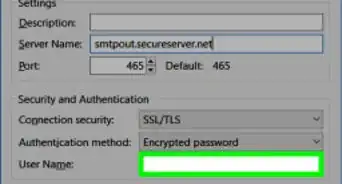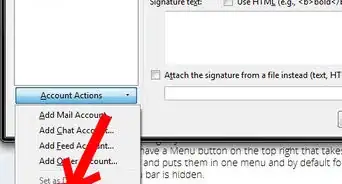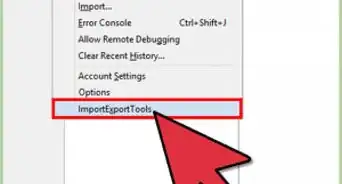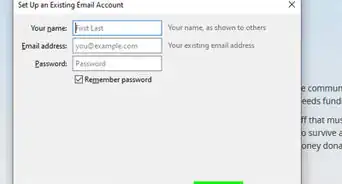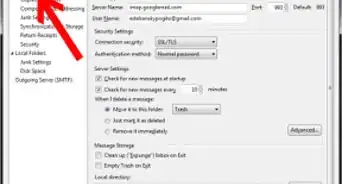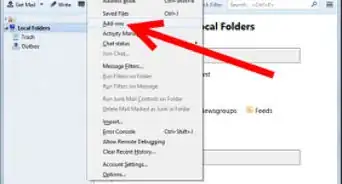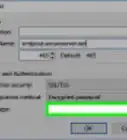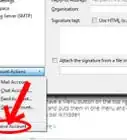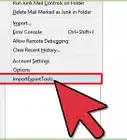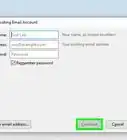X
This article was co-authored by wikiHow staff writer, Jack Lloyd. Jack Lloyd is a Technology Writer and Editor for wikiHow. He has over two years of experience writing and editing technology-related articles. He is technology enthusiast and an English teacher.
The wikiHow Tech Team also followed the article's instructions and verified that they work.
This article has been viewed 306,028 times.
Learn more...
This wikiHow teaches you how to create a backup folder for your Mozilla Thunderbird emails.
Steps
Part 1
Part 1 of 3:
Installing ImportExportTools
-
1Open Thunderbird. Click or double-click the Thunderbird app icon, which resembles a bluebird hovering over a white envelope.
-
2Click ☰. It's in the top-right corner of the window. A drop-down menu will appear.Advertisement
-
3Select Add-ons. This is in the drop-down menu. Selecting it prompts a pop-out menu.
-
4Click Add-ons. It's in the pop-out menu. Doing so opens the "Add-ons Manager" tab.
-
5Search for the ImportExportTools add-on. Click the search bar in the upper-right side of the window, then type in importexporttools and press ↵ Enter.
-
6Click Add to Thunderbird. It's to the right of the "ImportExportTools" heading.
-
7Click Install Now when prompted. This will prompt the ImportExportTools add-on to begin installing to Thunderbird.
-
8Click Restart Now when prompted. It's at the top of the window. Thunderbird will close and then re-open; at this point, you can proceed with exporting your email messages.
- If Thunderbird restarts in Safe Mode, click Exit when prompted, and then re-open Thunderbird before continuing.
Advertisement
Part 2
Part 2 of 3:
Exporting Email Messages
-
1Find the inbox you want to use. In the upper-left side of the Thunderbird window, look for the email address that you want to use, then find the "Inbox" folder below the email address.
-
2Right-click the inbox. Doing so prompts a drop-down menu.
- On a Mac, hold down Control while clicking the inbox.
-
3Select ImportExportTools. This is in the drop-down menu. A pop-out menu will appear.
-
4Select Export all messages in the folder. It's near the top of the pop-out menu. Doing so brings up a list of possible export file formats.
-
5Select a file type. Click the type of file you want to use to back up the emails. Depending on your intent for the emails, you'll most likely want to do one of the following:
- If you want to be able to import your backup to Thunderbird on another computer, select the EML format option.
- If you want to be able to read your emails with their original formatting and attachments, click HTML format (with attachments) and then click OK when prompted.
-
6Select a save folder. Click the folder in which you want to store your backup folder.
- For example, to save the backup folder on your desktop, you would click Desktop on the left side of the window here.
- On a Mac, you may have to click the "Where" drop-down box before you can select a folder.
-
7Click Select Folder. It's in the lower-right side of the window. Doing so will confirm your selected folder and back up your emails to it. Once the backup is complete, you'll be able to see them by opening the folder, opening the backup folder, and double-clicking the email(s) you want to view.
- On a Mac, click Choose here.
Advertisement
Part 3
Part 3 of 3:
Backing up a Profile
-
1Understand what backing up a profile does. Your Thunderbird profile (e.g., the email account you use) stores your account settings, inbox index, and more. If you want to be able to restore your profile in the event of a Thunderbird crash, you'll need to back up the profile folder.
-
2Open Thunderbird. Click or double-click the Thunderbird app icon, which resembles a blue bird hovering over a white envelope.
-
3Click ☰. It's in the top-right corner of the Thunderbird inbox window. A drop-down menu will appear.
-
4Select Help. You'll find this in the drop-down menu. Selecting it opens a pop-out menu.
-
5Click Troubleshooting Information. It's in the pop-out menu. This opens a new tab.
-
6Click Open Folder. It's to the right of the "Profile Folder" heading.
-
7Click the Profiles folder name. You'll find this at the top of the File Explorer window.
- Skip this step on a Mac—the "Profiles" folder should be open on the left side of the Finder.
-
8Copy your profile. Click once the folder that you want to copy, then press either Ctrl+C (Windows) or ⌘ Command+C (Mac).
- If there are multiple folders here, click one, press Ctrl+A (Windows) or ⌘ Command+A (Mac), and then copy the folders.
-
9Close Thunderbird. Thunderbird must be shut down in order for you to copy the file.
-
10Paste the copied folder. Go to the location in which you want to store your profile backup (e.g., an external hard drive), click a blank space in the window, and press Ctrl+V or ⌘ Command+V to paste in the profile folder.
Advertisement
Community Q&A
-
QuestionHow do I transfer a profile to a new download of Thunderbird?
 Community AnswerI use MozBackup. Search Google for it. It will back up both Thunderbird and Firefox, as well as some others.
Community AnswerI use MozBackup. Search Google for it. It will back up both Thunderbird and Firefox, as well as some others. -
QuestionHow do I restore Thunderbird emails?
 Community AnswerCopy the profile folder onto the new installation of Thunderbird. Follow the same steps, but instead of copying and placing it somewhere else, place the copy you have in the same folder (remember to close the Thunderbird to do this).
Community AnswerCopy the profile folder onto the new installation of Thunderbird. Follow the same steps, but instead of copying and placing it somewhere else, place the copy you have in the same folder (remember to close the Thunderbird to do this). -
QuestionHow do I reinstall data?
 Community AnswerUninstall the data from the settings page, it should be under the security-tab. Then, install the data again from the main settings page.
Community AnswerUninstall the data from the settings page, it should be under the security-tab. Then, install the data again from the main settings page.
Advertisement
About This Article
Advertisement
